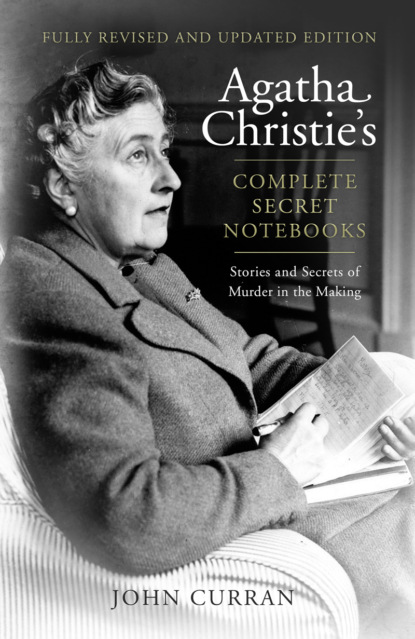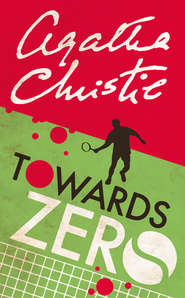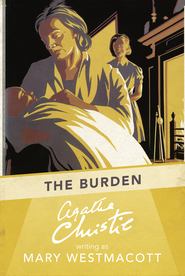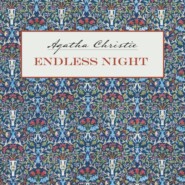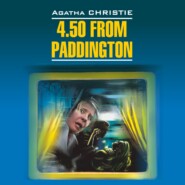По всем вопросам обращайтесь на: info@litportal.ru
(©) 2003-2024.
✖
Agatha Christie’s Complete Secret Notebooks
Настройки чтения
Размер шрифта
Высота строк
Поля
to observe ‘a seemly moderation in the use of Gangs, Death-Rays, Ghosts, Mysterious Chinamen and Mysterious Poisons unknown to Science’;
never to steal or disclose the plots of other members.
In the early days the Detection Club produced collaborative novels and, in more recent times, short story collections. In the early ventures different hands wrote succeeding chapters, each writer taking cognisance of the plot developments of his or her predecessor. Agatha Christie contributed to the three earliest publications, Behind the Screen in 1930, The Scoop the following year and the full-length novel The Floating Admiral in 1931. The first two shorter efforts were read in instalments on BBC radio and subsequently published in The Listener, finally appearing in book form in 1983.
In the case of The Floating Admiral each contributor, in an effort to prevent complications being introduced merely to make life difficult for the following contributor, had to include a proposed solution as well as a chapter. Christie’s contribution is the shortest in the book, but her proposed solution is a typically ingenious one. However, she decided that the time and effort that went into such collaborations could be more profitably spent on her own writing and she politely declined to involve herself in further such ventures.
The main reference to the Detection Club in the Notebooks is in Notebook 41, the first page of which is headed ‘Ideas 1931’ (despite the uncertainty about its date of foundation, by the time of this note the club was well established):
The 13 at Dinner Detective story Club (?)
Miss Sayers and her husband – Poisons Mr Van Dine and
Mr Wills Crofts and wife – Alibis Mrs Christie
Mr Rhode
Mr and Mrs Cole Mr Bentley
Miss Clemence Dane
Mr Berkeley and wife – fantastic writer
Although it is unlikely that this is what she had in mind when she wrote the note, the title Thirteen at Dinner was used in America two years later for Lord Edgware Dies. The US title refers to Chapter 15 of the book, where a character remarks that there were thirteen guests at the dinner table on the evening of Lord Edgware’s death, thereby giving Lady Edgware an alibi with a dozen witnesses.
Of the 13 people she lists most were her Detection Club fellow-writers:
‘Miss Sayers’ is Christie’s great contemporary Dorothy L. Sayers – writer, dramatist, anthologist, theologian and scholar. Although listed in Notebook 41 as ‘Miss’, Sayers had married Oswald Fleming in April 1926 but retained her maiden name for her professional activities.
‘Mr Van Dine’ was known to the reading public as S.S. Van Dine, creator of Philo Vance. The gap after his name would seem to indicate that Christie was not sure if he was married (he was), but his inclusion is odd. She certainly read his best-selling novels – some are on the shelves in Greenway House – but, as he lived in America, he was not a member of the Detection Club.
‘Mr Wills Crofts’ was Freeman Wills Crofts, creator of Inspector French of Scotland Yard, a painstaking and thorough policeman whose speciality (as indicated) is the unbreakable alibi. Like Christie his first novel, The Cask, appeared in 1920 and is still considered a classic. He continued to write until his death in 1955, producing over 40 novels.
‘Mr Rhode’ is John Rhode, whose real name was Major Cecil John Charles Street and who also wrote as Miles Burton. Like Christie he was a Crime Club author for much of his career and altogether he wrote almost 150 novels under both names.
‘Mr and Mrs Cole’ was the husband-and-wife team of G.D.H. and Margaret Cole, detective novelists and Socialists. Although the pair were prolific, with thirty novels to their credit, their books are verbose, lifeless and long out of print.
‘Mr Bentley’ was E.C. Bentley, whose reputation as a detective novelist rests almost entirely on one novel, Trent’s Last Case (1913). He also issued a book of short stories and co-wrote another title, Trent’s Own Case, both featuring Philip Trent.
Clemence Dane is largely forgotten as a crime writer. Enter Sir John, filmed by Hitchcock as Murder, is her best known title.
‘Mr Berkeley’ is Anthony Berkeley, who also wrote as Francis Iles. A very influential writer, he foresaw the emergence of the crime novel, as distinct from the detective novel, and his contribution to both branches of the genre is impressive. Alfred Hitchcock memorably filmed his Iles novel Before the Fact as Suspicion.
In addition to this list, Christie makes various allusions to her fellow Detection Club members in a range of works. Partners in Crime, Christie’s 1929 Tommy and Tuppence collection of short stories, sees the Beresfords investigating their cases in the style of various detectives. She pastiches Berkeley in ‘The Clergyman’s Daughter’ and Crofts in ‘The Unbreakable Alibi’ although, oddly, none of the other writers mentioned in Notebook 41 is featured.
An article Christie wrote for the Ministry of Information in 1945, ‘Detective Writers in England’, is also of note. Here the writers featured are John Dickson Carr, H.C. Bailey, Ngaio Marsh, Austin Freeman and Margery Allingham and Sayers, the only writer common to the article and Notebook 41, although all were members of The Detection Club. This may be due to the fact that Christie had more dealings with Sayers, mostly during the planning of the collaborative titles above, all of which were masterminded by Sayers. Chapter 6 of The Body in the Library also mentions Sayers, Bailey and Dickson Carr (as well as Christie herself); and ‘The Flock of Geryon’, the tenth Labour of Hercules, mentions Sherlock Holmes, Mr Fortune, the creation of Bailey, and Sir Henry Merrivale, the creation of Dickson Carr. Carr’s The Burning Court is also a minor clue in Evil under the Sun and the same writer gets a further mention in The Clocks.
A single sentence each in Notebooks 18 and 35 also mentions the Detection Club, both with the same idea:
Guest night at the Det[ection] Club during ritual – Mrs. O[liver]’s 6 guests
Detection Club Murder – Mrs Oliver – her two guests – someone killed when the Ritual starts
Guest Night was, not surprisingly, an evening when members of the club could invite a guest for dinner. The ‘ritual’ was the initiation ceremony, involving the swearing of an ‘oath’ with Eric the Skull standing in for the Bible. As a detective novelist Mrs Oliver would, of course, have been a member of the club.
Other Crime Writers in the Notebooks
Apart from the ‘13 at Dinner’ list in Notebook 41, Agatha Christie makes other references to her fellow crime writers. The following is a selection of those mentioned:
E.C. Bentley
Apart from his appearance in connection with the Detection Club, he is also referred to in Notebook 41. The following concerns a contribution to Bentley’s anthology A Second Century of Detective Stories, published in 1938, where ‘The Case of the Distressed Lady’ from Parker Pyne Investigates represents Christie
A HP story for Bentley
G.K. Chesterton
The creator of Father Brown, the immortal priest detective, and first president of the Detection Club, Chesterton contributed to their collaborative novel The Floating Admiral. The reference in Notebook 66 is a reminder to provide a short story for him, presumably for his 1935 anthology A Century of Detective Stories. She did not write a new one but instead provided ‘Sing a Song of Sixpence’.
Ideas for G. K. C.
John Creasey
In Notebook 52 there are two references, both very similar, to John Creasey, British crime writer of almost 600 books. Hugely prolific under a variety of pseudonyms, he was also a founder of the Crime Writers Association. In The Clocks, the typewriting agency, which is the focus of much of the novel, does some work for Creasey-like authors.
Miss M[artindale] is chief agent – Sec[retary] to Creasey – who wrote spy stories
Rufus King
Twice during the plotting of Mrs McGinty’s Dead Christie mentions Murder by Latitude, a novel by this largely forgotten US writer. Murder by Latitude features a typical Christie setting, aboard a ship from which contact with land has been severed. Although not mentioned by name, there are a few of his novels in the library at Greenway House.
Atmosphere like Murder by Latitude – some people – amongst them a Murderer
A.E.W. Mason
Mason was the creator of Inspector Hanaud. The reference in Notebook 35 is to At the Villa Rose, published in 1910, a case involving the death of an elderly woman and the suspicion surrounding her companion. While plotting One, Two, Buckle my Shoe Christie reminds herself of it:
A murder discovered (woman? Elderly? Like Villa Rose) Clue – a shoe buckle
Edgar Allan Poe
The ‘inventor’ of the detective story when he published ‘The Murders in the Rue Morgue’ in 1841. ‘The Purloined Letter’, another famous case for his detective Auguste Dupin, turns on the idea of hiding in plain sight and Christie’s reference is in connection with a fortune hidden not in but on an envelope, as stamps. She used this plot device in the short story ‘Strange Jest’ and in Spider’s Web. The concept of hiding in plain sight is also used in ‘The Nemean Lion’.
Stamps – fortune left in them – on old letters in desk – ‘Purloined Letter’ mentioned – they look in obvious envelope – really stamps on it
Dorothy L. Sayers
Sayers’ creation Lord Peter Wimsey made his debut in 1923 in Whose Body? and is mentioned in Notebook 41, as a model for Ronnie West in Lord Edgware Dies. It is also possible that the naming of Dr Peter Lord in Sad Cypress is homage to Christie’s great contemporary.





